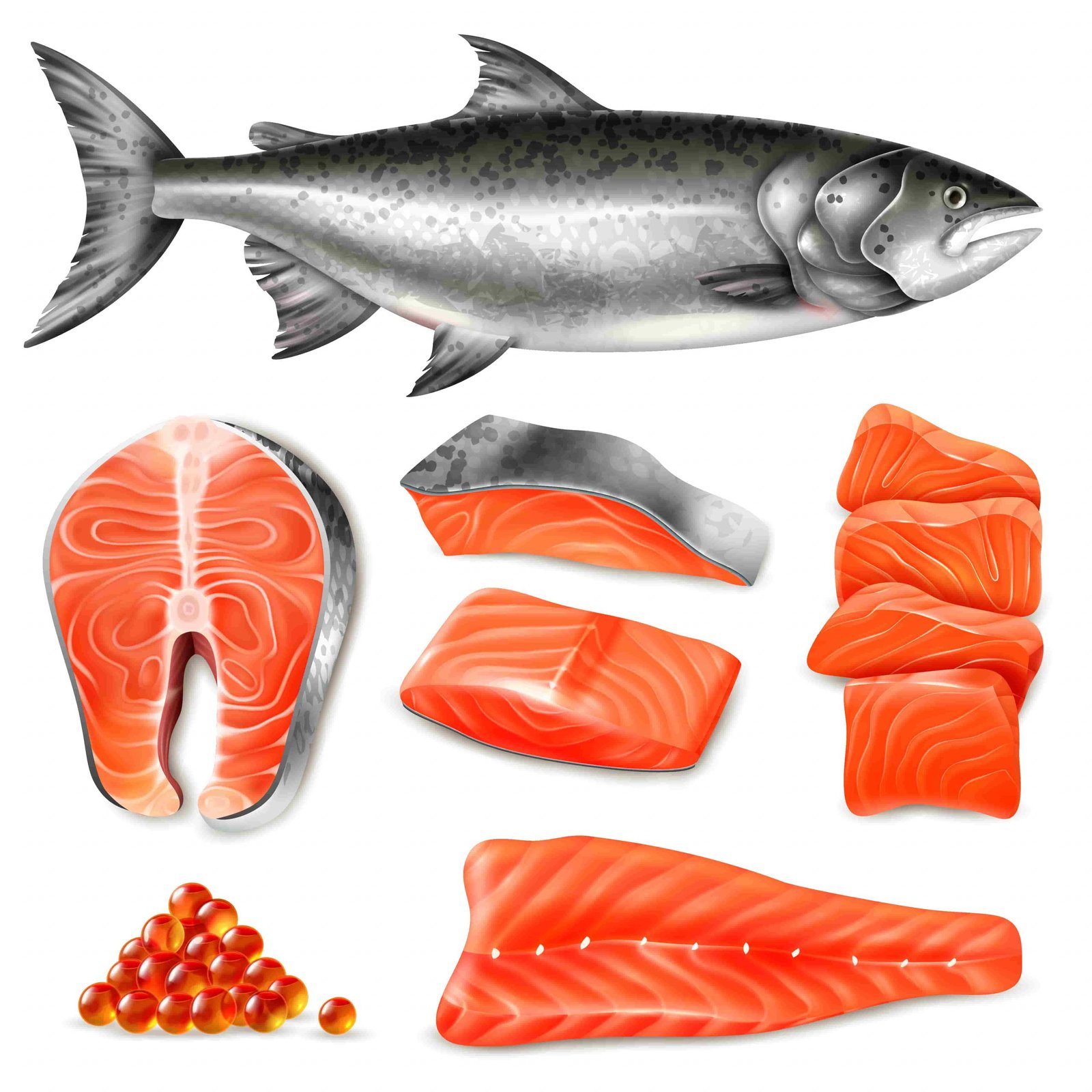
Salmon, an icon of vitality, is not only a renowned fish species known for its nutritional value but also for its intriguing life cycle and migration patterns. Let’s delve into the captivating world of this fish species, its varieties, its contributions to ecosystems, and the challenges it faces.
A Closer Look at Salmon
Salmon is a common name used to describe several species of ray-finned fish from the family Salmonidae. Other members of this family include trout, char, grayling, and whitefish. There are a few defining characteristics that separate salmon from other fish:
- Life Cycle: Unlike most fish species, salmon are anadromous, which means they are born in freshwater, migrate to the ocean, and return to freshwater to reproduce.
- Coloration: During the spawning season, salmon undergo significant changes, notably their color, which varies from silver to vibrant shades of red and green.
- Geographical Distribution: Salmon species are primarily found in the cold waters of the Northern Hemisphere, especially the North Atlantic and the Pacific Ocean.
The Varieties of Salmon
There are several species of salmon, each with its unique characteristics. Some of the most prominent species include:
- Atlantic Salmon: Known for its adaptability, this species can be found in both the eastern and western regions of the North Atlantic Ocean.
- Pacific Salmon: There are five main species under this category – Chinook, Coho, Sockeye, Pink, and Chum salmon. The Pacific salmon are known for their remarkable migration routes.
Significance of Salmon in the Ecosystem
Salmon play a crucial role in supporting the health and diversity of our ecosystems. Their life cycle contributes significantly to nutrient cycling, which in turn supports plant and animal life both in marine and terrestrial ecosystems.
These remarkable fish are known as “keystone species” due to their significant impact on the surrounding environment. Are anadromous, meaning they hatch in freshwater rivers and streams, migrate to the ocean to grow and mature, and then return to their natal streams to spawn. This lifecycle has profound ecological implications. As journey from freshwater to the ocean, they transport valuable nutrients from marine ecosystems to inland habitats. When they return to spawn, their bodies provide a vital source of nutrients, enriching the surrounding soil and supporting the growth of plants and trees. In this way, contribute to the health of riparian areas, promote biodiversity, and sustain various wildlife populations, including bears, eagles, and otters, which rely on them as a food source.
Salmon and Human Civilization
From a socio-economic perspective, salmon fishing and farming have been vital sources of livelihood for many communities, particularly those in coastal areas. Salmon are also a popular delicacy worldwide, appreciated for their rich, oily meat and high omega-3 content.
The Challenges Salmon Face
Despite their resilience, salmon populations are increasingly threatened by a multitude of factors, including climate change, habitat destruction, overfishing, and diseases. Measures are in place globally to safeguard these magnificent creatures, but there is much more to be done.
Conclusion
The captivating world of salmon demonstrates their significance both as a marvel of nature and a crucial component of our ecosystems. As we continue to enjoy the benefits salmon bring us, it is vital to balance our actions with their conservation, ensuring that future generations can appreciate them just as we do.







